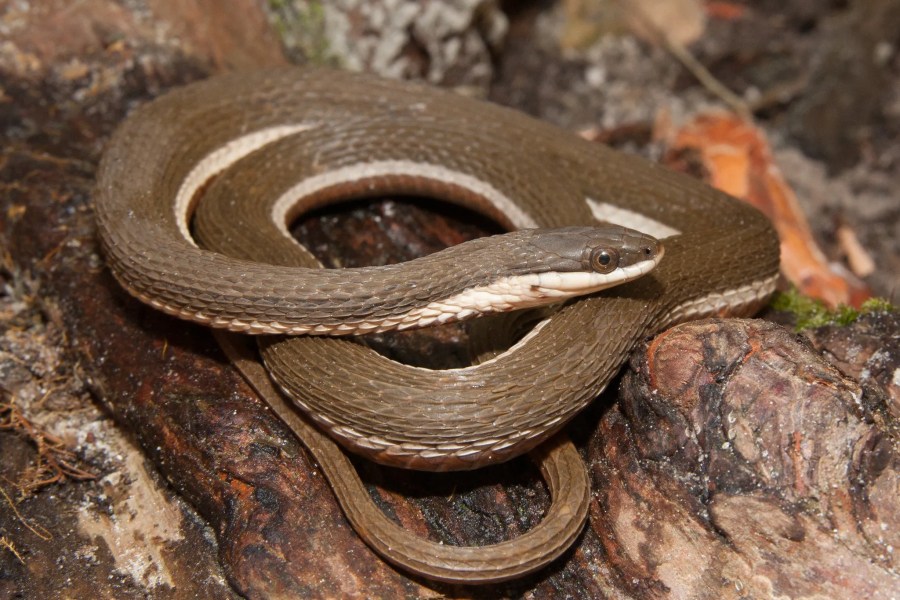Queen Snakes: The King of Crayfish
The queen snake (Regina septemvittata) is one of the two aquatic snakes found in Hamilton County. The other local snake is known as the northern water snake. Northern water snakes are generalists, meaning they will eat just about anything they catch. A northern water snake eats primarily freshwater fish, but will also eat frogs, toads, salamanders, crayfish, insects and even young ducklings. Unlike this snake species, however, the queen snake can only eat crayfish. Specifically, crayfish that have just finished molting. With such a specific type of food, you may wonder, how do queen snakes detect a molting crayfish? The answer is simple: its scent.
To understand how these snakes find their prey, we must first understand the molting process of the eastern crayfish. The eastern crayfish, being an arthropod, needs to molt as part of its growing process. When the old, hard skin sheds off, the fresh skin underneath is soft, making crayfish highly vulnerable to predation.
Crayfish usually hide until their new shell is hardened. But their hiding spots are no match for queen snakes. The queen snake can detect the crayfish’s stage of growth by smelling a chemical responsible for producing a molting triggering hormone, known as Ecdysone (Jackrel et al., 2011). Queen snakes are so sensitive to these chemicals that they have even attacked molting freshwater shrimp by mistake.

Seeing as crayfish make up 85%–100% of their diet, the queen snake’s survival rate is highly correlated with the survival rate of their prey (Burst, 2013). Crayfish are highly vulnerable to water pollution, because it affects the durability of their shell.
Having a queen snake around is a sure sign of a healthy freshwater ecosystem. This alone should give us ample reason to sustain our freshwater ecosystem, as water pollution can – directly and indirectly – affect the animals that call it home. Being a predator, snakes are also important for keeping the population of prey animals, such as mice, down. Without snakes as a whole, mice and fish populations will increase above the point where the ecosystem can sustain them.
Learn a bit more about these rulers and create your own with our Queen Snake Coloring Page.
—
James Harris III
Nature Interpreter, Sharon Woods
Citations
- Burst , T. J. (2013 January 1). Dietary Preference of the Queensnake (Regina septemvittata).
- Jackrel, Sara L. and Howard K. Reinert. (2011 September). “Behavioral Responses of a Dietary Specialist, the Queen Snake (Regina septemvittata), to Potential Chemoattractants Released by Its Prey.” BioOne Complete, Society for the Study of Amphibians and Reptiles.
- Queensnake (Regina septemvittata). iNaturalist. (n.d.).


